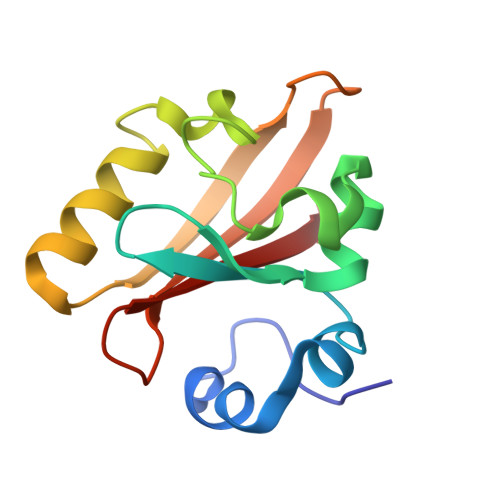Volume-conserving trans-cis isomerization pathways in photoactive yellow protein visualized by picosecond X-ray crystallography
Jung, Y.O., Lee, J.H., Kim, J., Schmidt, M., Moffat, K., Srajer, V., Ihee, H.(2013) Nat Chem 5: 212-220
- PubMed: 23422563
- DOI: https://doi.org/10.1038/nchem.1565
- Primary Citation of Related Structures:
3VE3, 3VE4, 4HY8, 4I38, 4I39, 4I3A, 4I3I, 4I3J - PubMed Abstract:
Trans-to-cis isomerization, the key reaction in photoactive proteins, usually cannot occur through the standard one-bond-flip mechanism. Owing to spatial constraints imposed by a protein environment, isomerization probably proceeds through a volume-conserving mechanism in which highly choreographed atomic motions are expected, the details of which have not yet been observed directly. Here we employ time-resolved X-ray crystallography to visualize structurally the isomerization of the p-coumaric acid chromophore in photoactive yellow protein with a time resolution of 100 ps and a spatial resolution of 1.6 Å. The structure of the earliest intermediate (I(T)) resembles a highly strained transition state in which the torsion angle is located halfway between the trans- and cis-isomers. The reaction trajectory of I(T) bifurcates into two structurally distinct cis intermediates via hula-twist and bicycle-pedal pathways. The bifurcating reaction pathways can be controlled by weakening the hydrogen bond between the chromophore and an adjacent residue through E46Q mutation, which switches off the bicycle-pedal pathway.
- Center for Nanomaterials and Chemical Reactions, Institute for Basic Science, Daejeon 305-701, Republic of Korea.
Organizational Affiliation:

















